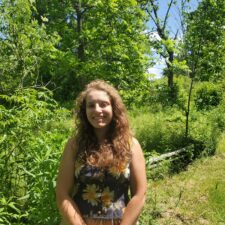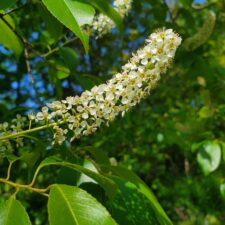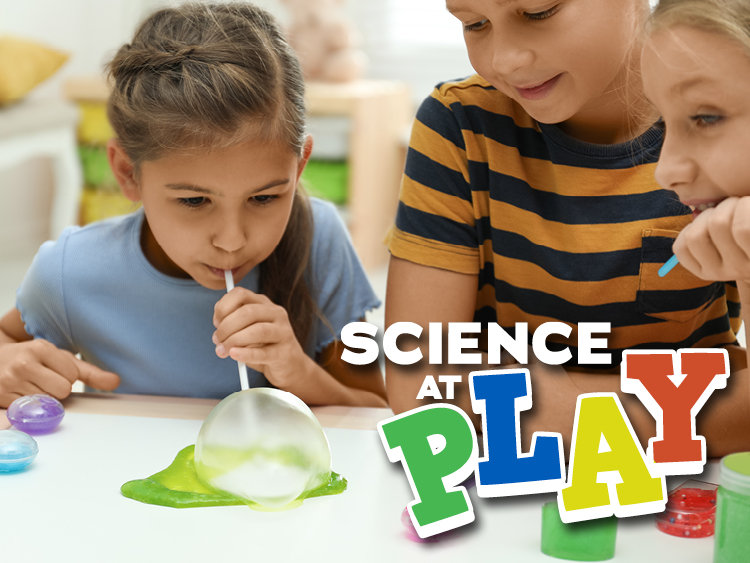Last month, the Connecticut Science Center presented MakeFest: Make it Grow, welcoming local gardeners, farmers, makers, and artisans. Everyone highlighted the importance of growing healthy, smart, green, and local through engaging demonstrations, all centered around Connecticut gardening and agriculture.
 Ecologist Aubree Keurajian of Durham, CT-based Ungardening Native Plants hosted a display, where attendees got to learn all about ungardening, what it means and how it’s beneficial in our communities.
Ecologist Aubree Keurajian of Durham, CT-based Ungardening Native Plants hosted a display, where attendees got to learn all about ungardening, what it means and how it’s beneficial in our communities.
Ungardening is a term many of us are probably not familiar with, so what exactly does it mean? Most simply, it is recognizing that our yards are part of the natural ecosystem and treating them as such. Ungardening is encouraging native plants, to build habitats for pollinators and other beneficial wildlife, stopping the use of pesticides, and stepping back to allow nature to be what Keurajian calls “healthily messy.”
“Whereas traditional gardening often likens backyards to ‘outdoor living rooms,’ ungardening requires us to consider the ways that our yard is interacting with the rest of the ecosystem it is situated within, in addition to our needs for the property,” notes Keurajian. “Ungardening is not merely replacing nonnative garden plants with native species, but rather using land restoration and management techniques to shape our yards into something that more closely resembles the natural world.”
So, instead of buying pretty, string patio lights, we should be turning off lights at night. And, she says that there’s no need to spend time laying down mulch either. It’s better to have access to bare soil and to leave the leaves, dead stalks, and standing deadwood (where safe), to increase the available habitat for native bees and other pollinators and beneficial wildlife.
“Ungardening also requires us to look at the nonnative species in our yard and remove those that are invasive,” continues Keurajian. “Invasive species are nonnative species that can spread into wild areas and outcompete native species. They are not adapted to our ecosystem and so they provide very little benefit to our native insects and other wildlife. Many invasive species were introduced through horticulture, and although many are now illegal for nurseries to sell, they persist as garden favorites and are often found in landscaping.”
Communities Can Make an Impact
 By ungardening, Keurajian says that we can change our yards from something that has a neutral or even negative impact on the surrounding ecosystem, into a haven for native flora and fauna. Here on the East coast, for example, most of the land around us is privately owned, so the land management choices private landowners make have a huge impact.
By ungardening, Keurajian says that we can change our yards from something that has a neutral or even negative impact on the surrounding ecosystem, into a haven for native flora and fauna. Here on the East coast, for example, most of the land around us is privately owned, so the land management choices private landowners make have a huge impact.
“Public parks, when surrounded by conventionally managed or developed land become like island refuges for native species, but by ungardening our yards and other areas, we can create steppingstones of healthy habitat to connect these larger preserved areas,” she notes. “Even a tiny area can be a critical way station. And when neighbors work together, these tiny areas can become large.”
Let’s Get Started Ungardening
To start ungardening, the easiest and most economical way is to let native plants show up on their own. Designate the area that you want to ungarden and let it start growing! Sounds like a foolproof way to develop a green thumb. However, unfortunately, our environment is full of invasive species, so the next step is to remove invasive species, or as she likes to call it, “gardening by subtraction.”
“Learning to recognize the invasive species in your yard will help you get an understanding of plant identification, which is great because the next step is to learn who else is there,” says Keurajian. “There are lots of non-native species that aren’t invasive, and you can choose for your yard which of those you’d like to stay, but there are also many native plants that are great at finding their own way home.”
In fact, she says that many native species, particularly our annuals, have been maligned as “weeds,” but a weed is simply a plant growing where you don’t want it. So, when your gardening perspective changes, so too will your concept of weeds. “Weeds” generally refer to plants that show up without asking and grow quickly, but those characteristics allow plants to play an important role in their native ecosystems.
“When there is a disturbance, like a flood, a fire, or wind damage from a storm, a group of plants called ‘pioneers’ act like the immune response of the ecosystem, growing quickly to cover the soil and prevent erosion and nutrient leaching from occurring,” she says. “Many of these species are annuals that produce large amounts of seed. Being annuals means they can grow quickly and producing large amounts of seed increases the likelihood that some will find a new disturbance where they are needed.”
Get to Know Keurajian
 What interested you in ungardening?
What interested you in ungardening?
I have always been deeply interested in nature. I grew up on a hobby farm in Durham, and as a kid I spent most of my time in my backyard, covered in mud from exploring any place I could find and constantly asking my mother if I could eat the plants I found.
As I got older, I learned about environmental problems like pollution and climate change and worked to find ways I could help, from crocheting hats to raising money for tree planting to being the president of my high school’s environmental club. When it came time to apply to college, Cornell’s College of Agriculture and Life Sciences required me to apply not just to the school, but to a major. Environmental science was the obvious direction, and I chose the more “hard science” of the two environmental science options offered — Science of Natural and Environmental Systems, or less clunkily (but unofficially), Systems Ecology. I couldn’t have had a better major if I’d designed it myself.
Through Ungardening Native Plants, I provide one-on-one yard and land management consultation and educate on ecological issues through walks, talks, workshops and online.
The Connnecticut Science Center continues to highlight makers, artisans, and inventors throughout the year with the MakeFest series. More information on the series can be found at CTScienceCenter.org/Makefest.

Jennifer Carmichael is a Contributing Writer at the Connecticut Science Center with a degree in Journalism from the University of Rhode Island. She’s written on lifestyle topics for magazines and newspapers throughout the state. A mom of two teenagers, she can’t promise that parenting is a breeze, but she can offer easy tips, tricks, and advice on all things about the Science Center.



